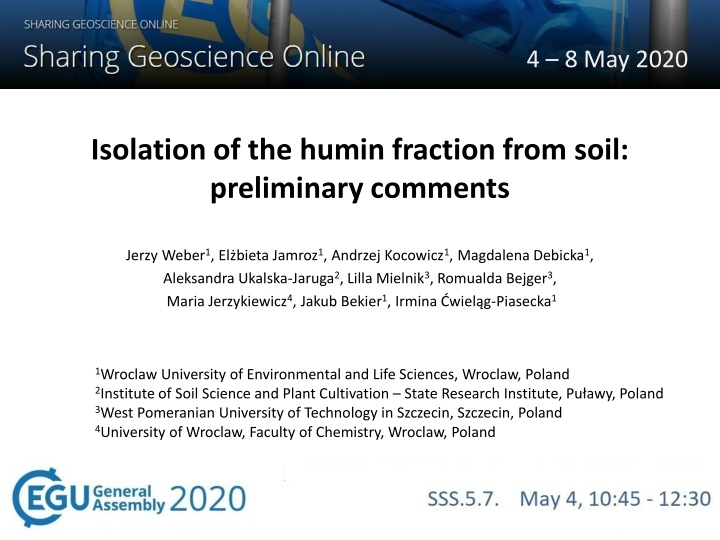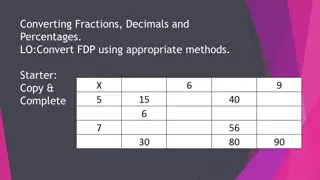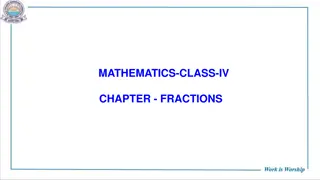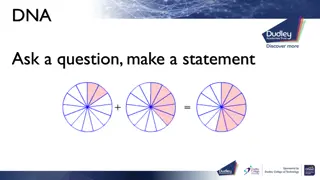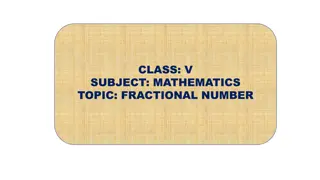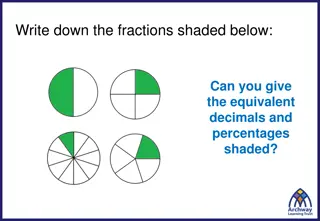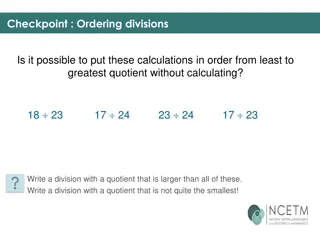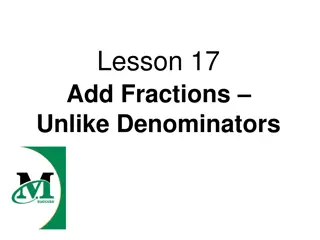Comparing and Ordering Fractions: Which is Bigger? Ascending Order
Dive into comparing and ordering fractions with different denominators. Explore concepts of finding common denominators, multiplying fractions, and comparing numerators. Practice identifying the bigger fraction and arranging fractions in ascending order. Enhance your understanding of fractions through examples and exercises, mastering comparisons without diagrams.
Download Presentation

Please find below an Image/Link to download the presentation.
The content on the website is provided AS IS for your information and personal use only. It may not be sold, licensed, or shared on other websites without obtaining consent from the author.If you encounter any issues during the download, it is possible that the publisher has removed the file from their server.
You are allowed to download the files provided on this website for personal or commercial use, subject to the condition that they are used lawfully. All files are the property of their respective owners.
The content on the website is provided AS IS for your information and personal use only. It may not be sold, licensed, or shared on other websites without obtaining consent from the author.
E N D
Presentation Transcript
4 8 May 2020 Isolation of the humin fraction from soil: preliminary comments Jerzy Weber1, El bieta Jamroz1, Andrzej Kocowicz1, Magdalena Debicka1, Aleksandra Ukalska-Jaruga2, Lilla Mielnik3, Romualda Bejger3, Maria Jerzykiewicz4, Jakub Bekier1, Irmina wiel g-Piasecka1 1Wroclaw University of Environmental and Life Sciences, Wroclaw, Poland 2Institute of Soil Science and Plant Cultivation State Research Institute, Pu awy, Poland 3West Pomeranian University of Technology in Szczecin, Szczecin, Poland 4University of Wroclaw, Faculty of Chemistry, Wroclaw, Poland
Introduction and purpose of work Humic substances play a crucial role in controlling soil properties. Among humic substances, humin fraction has been the least studied, although it usually constitutes over half of their composition. This is mainly due to the fact, that isolation of humin fraction is much more ddifficult, compared to humic and fulvic acid fractions. Methods of humin fraction isolation can be divided into two main groups: - extraction by different organic solvents, - removal of humic and fulvic acids followed by digestion of mineral soil components. We investigated some modifications of the latter method, in which humin fraction is not dissolved/precipitated. Humic and fulvic acids were removed (extracted) according to the method recommended by the International Humic Substances Society (IHSS). Humin fraction was isolated from eight mollic horizons of Chernozems and Phaeozems, which differed in their physico-chemical properties.
Procedure removal of supernatant with light fulvic fraction centrifuge soil + 0.1 M HCl residue + 0.1 M NaOH (multiple extraction) removal of supernatant with humic and fulvic acids shaking 4 hours shaking 20 hours centrifuge washing residue with H2O removal of deposited sand selection of suspension with humin centrifuge removal of mineral components digestion of residue with 10% HF/HCl (week digestion 8 times) final preparation rinsing with H2O and dialyzing freeze drying
Conclusions During removal of humic and fulvic acids, the concentration of carbon in supernatant (corresponding to the content of removed humic and fulvic acid) considerably increase as shaking time is extended from 4 hours (recommended by IHSS method) to 20 hours. Removal of sand fractions after extraction of humic and fulvic acids significantly reduces digestion time with HF/HCl. Longer than 8 weeks digestion with 10% mixture of HF/HCl did not affect the reduction of the ash content of the humin fraction obtained. Acknowledgements This work was supported by the National Science Center (NCN) Poland (project No 2018/31/B/ST10/00677 Chemical and spectroscopic properties of soil humin fraction in relation to their mutual interaction with pesticides")
